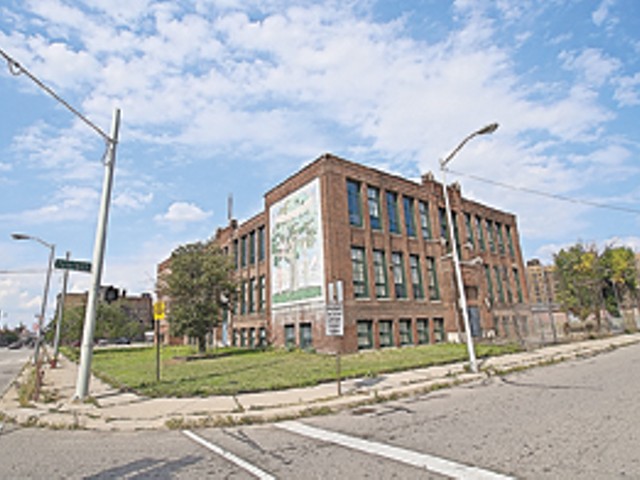"If there hadn't been women we'd still be squatting in caves eating raw meat, because we made civilization in order to impress our girlfriends." —Orson Welles
Can we not reside in caves and impress our girlfriends?
It's not so rare when what's often considered primordial collides with post-modern conceptual art. So it is that Detroit's most discreet exhibition house and artist collective is trying to put their own spin on that very theme — unashamedly out of pure practicality.
Located on the somewhat desolate third floor, inside bleak building No. 4, of the immense artist studio/mini-city known as the Russell Industrial Center, the Cave is a fitting moniker indeed.
"It's a cold, relatively uninviting space," says co-founder Vince Troia, cracking a smile. "It's not like it gets foot traffic — but it's not like we were looking for that either."
Founded in May 2007, the Cave came together when a handful of College for Creative Studies grads, who'd worked closely together during their senior year, made a decision to actively function as a group in order to help one another maintain a focus on creating art.
This was just before the Russell experienced what Troia refers to as "the big bang" — before the boomtown rush to get cheap and massive studio space with killer natural light.
The Detroit Industrial Project (DIP) had recently been established there but, for the majority of art school grads, the Russell was relatively unknown. But by September '07, the complex had a reputation as perhaps the city's most important art incubator.
"At first we were just looking for studio space. We had enough artists involved to make it affordable," says Troia, who, along with artists Andrew Davis, Nate Morgan, Kevin Beasley and Vanessa Merrill, set the mold for other Russell-based collectives-galleries such as ORG Contemporary.
"The space we got was still just so huge," Troia continues. "It wasn't but three months in that we decided to construct an exhibition space. It seemed like an obvious thing to do once we could grasp what we were working with."
The result is an exemplary Detroit gallery, circa 2009-10. On the inside it's fresh, clean and the mediums run the gamut, and those who show up are mainly artists looking for two things: an original thought and a free glass of wine. The outside looks like something from Hostel. It's not the kind of place you just happen to stumble upon.
"Everything's out of the way in Detroit, isn't it?" Troia says rhetorically. "I mean, I guess it depends on what you're doing, but the unassuming aesthetic is what Detroit is all about. The public conception outside the city isn't one that realizes all of the art being made here. There's a charm in that."
The Cave's first exhibit coincided with the inaugural People's Arts Fest, which celebrated its third year just weeks ago. Since, the Cave has exhibited the work of many local, national and international artists. There was the exhibit of Swedish artists, then a Slovenian show, a group out of New York City revealed their works last winter, and this season we'll see the work from a group of artists from Yale University.
"I'm not sure how, but people hear about us somehow. Exhibits go like this: We have the opening reception and it goes well, area artists come out. Then the show sits in the dark for the next three weeks. I used to come in on Saturdays and just sit around for a few hours in case anyone showed up but, eventually, I was like, fuck that. I'd like that to change."
Art, after all, has no purpose if it isn't seen. So the Cave dwellers are doing what some other arts spots do — they're utilizing their space for other opportunities. They've already hosted a handful of musical performances and late-night dance parties, which, Troia says, has already increased awareness for the space. He says that some visual artists who are also musicians have played their openings, which, for the better, seems to draw two crowds. In the future, the Cave will host lecture series and show films.
Troia would like to increase the number of outside curators too, which he believes would legitimatize the Cave as a Detroit exhibition space.
It's hard to tell whether the Cave's inconspicuousness helps or hurts. But these are artists, not businessmen.
"It's not like we have any real guidelines — we just want to continue to create," Troia says. "Is a piece going to sell? We couldn't care less. No one's coming up here to buy shit anyway."
On Friday, Sept. 18, the Cave opens an exhibition curated by Michael E. Smith. See cavedetroit.com.





